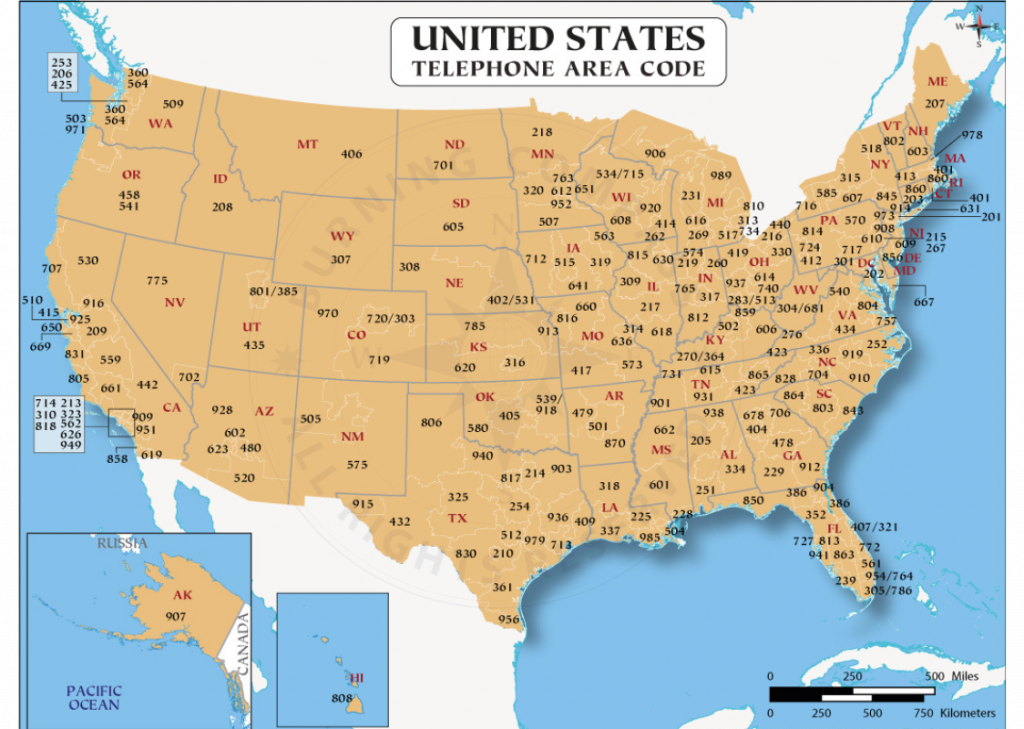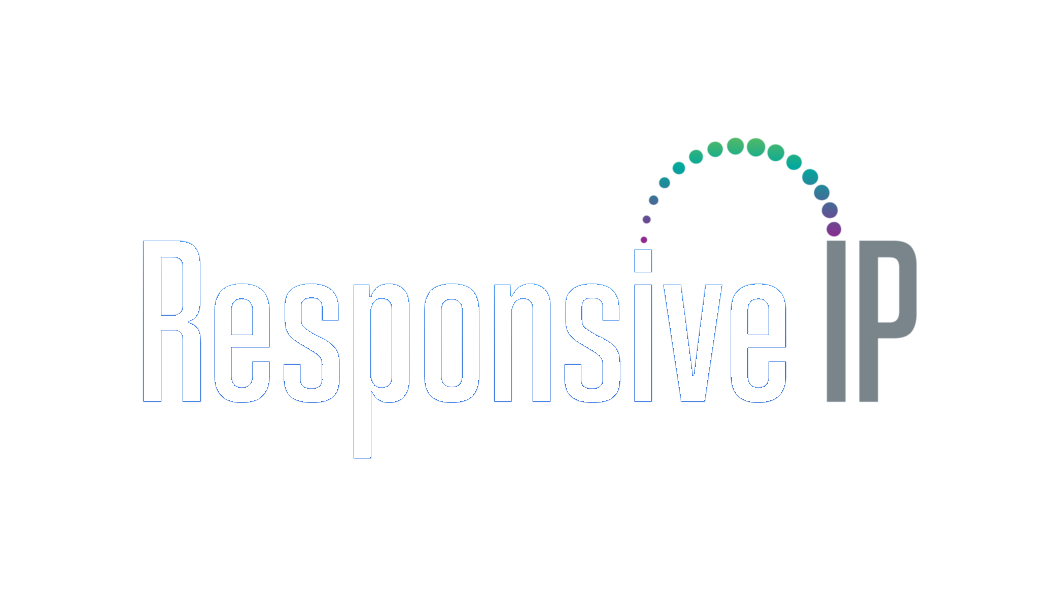Purchase your dream phone numbers for your business

In today’s digital age, businesses have a wide range of communication options available to them. Two popular choices are landline phones and cell phones. Both options have their pros and cons, and choosing the right communication solution for your business is crucial. In this comprehensive guide, we will explore the key factors to consider when deciding between a landline and a cell phone for your business. By the end of this article, you will have a clear understanding of the advantages and disadvantages of each option, enabling you to make an informed decision.
1. Introduction
In the past, a landline phone was the primary means of communication for businesses. However, with the rapid advancement of mobile technology, cell phones have become increasingly popular. Today, many businesses are faced with the decision of whether to stick with a traditional landline or make the switch to a cell phone.
Both options have their advantages and disadvantages, and the choice ultimately depends on your specific business needs and preferences. In this guide, we will discuss the key factors to consider when choosing between a landline and a cell phone for your business, including cost considerations, reliability, flexibility, features, professionalism, integration, security, and customer preferences.
By thoroughly evaluating these factors, you can make an informed decision that aligns with your business goals and ensures effective communication with your customers, clients, and employees.
2. Cost Considerations
One of the most important factors to consider when choosing a communication solution for your business is the cost. Both landline phones and cell phones come with their own expenses, and understanding these costs will help you make a financially sound decision.
Monthly Expenses
When it comes to monthly expenses, cell phones often have a higher cost compared to landline phones. Cell phone plans typically include data, voice minutes, and text messages, which can add up quickly, especially if you have multiple employees. Additionally, if you choose to provide cell phones to your employees, you will be responsible for covering their monthly plan expenses.
On the other hand, landline phones have a more predictable monthly cost. Most landline providers offer fixed-rate plans that include unlimited local and long-distance calling. However, additional charges may apply for international calls or extra features.
Equipment Costs
Another cost consideration is the equipment required for each option. Cell phones require individual devices for each user, which can be expensive, especially if you have a large workforce. Additionally, cell phone devices may need to be replaced or upgraded periodically, adding to the overall equipment costs.
Landline phones, on the other hand, require a central phone system that connects multiple phones throughout your office. While the initial setup cost may be higher, the cost per phone is typically lower compared to cell phones. Additionally, landline phones are generally more durable and have a longer lifespan, reducing the need for frequent replacements.
Long-Distance Charges
If your business frequently makes long-distance or international calls, the cost of these calls should be taken into account. Cell phone plans often include long-distance and international calling options, but additional charges may apply. It’s important to review the details of your cell phone plan and consider any potential extra costs.
With landline phones, long-distance and international calling rates vary depending on your provider. Some providers offer discounted or bundled long-distance plans, while others charge per-minute rates. Analyzing your calling patterns and estimating your long-distance usage will help you determine which option is more cost-effective.
3. Reliability and Call Quality
Reliability and call quality are essential factors to consider when choosing a communication solution for your business. Your customers and clients should be able to reach you consistently, and your calls should be clear and uninterrupted.
Cellular Network Coverage
One of the primary concerns with cell phones is network coverage. While cellular networks have significantly improved over the years, there are still areas with limited or no coverage. If your business operates in a remote or rural location, it’s essential to ensure that your cell phone provider offers reliable coverage in that area.
Before making a decision, research the coverage maps of different cell phone providers and consult with other businesses in your area to determine which provider offers the best coverage. Conducting a trial period with a cell phone plan can also help you assess the reliability of the network in your specific location.
Landline Stability
Landline phones have a reputation for stability and reliability. Unlike cell phones, landline phones are not affected by factors such as network congestion, signal interference, or battery life. As long as your landline is connected to a power source, it will continue to work even during power outages.
If your business relies heavily on uninterrupted communication, such as call centers or emergency services, a landline may be the more reliable option. However, it’s important to note that landlines are vulnerable to physical damage, such as cut cables or equipment failure, which can disrupt your communication temporarily.
Call Quality
Call quality is another crucial aspect to consider. While cell phone call quality has improved significantly, it can still be affected by factors such as network congestion, background noise, and weak signals. This can lead to dropped calls, static, or poor audio quality, which can be frustrating for both you and your customers.
Landline phones, on the other hand, typically offer superior call quality. Calls made over landlines are transmitted through dedicated copper wires or fiber-optic cables, resulting in clear and reliable communication. If call quality is of utmost importance to your business, a landline may be the preferred choice.
4. Flexibility and Mobility
The flexibility and mobility offered by your communication solution can greatly impact your business operations. Consider the mobility needs of your employees, the ability to work remotely, and the flexibility to manage calls efficiently.
Remote Work Capability
In today’s modern work environment, remote work and flexible schedules have become increasingly common. If your business embraces remote work or has employees who frequently work outside the office, a cell phone may provide greater flexibility.
Cell phones allow employees to stay connected and accessible no matter where they are. Calls can be forwarded to cell phones, enabling employees to answer business calls even when they are not physically present in the office. This flexibility can improve productivity and customer satisfaction by ensuring that important calls are not missed.
On the other hand, landline phones are limited to the physical location where they are installed. If your employees need to be reachable while on the go, a cell phone may be the more suitable option.
Call Routing and Forwarding
Efficient call routing and forwarding capabilities can streamline your business operations and ensure that calls are directed to the right person or department. Both landline phones and cell phones offer call routing and forwarding features, but the ease of use may vary.
Cell phones often have built-in call forwarding options that allow you to redirect calls to another number, such as your personal cell phone or another employee’s phone. Additionally, some cell phone providers offer advanced call routing features, such as simultaneous ringing on multiple devices or automated call distribution.
Landline phones can also be configured to forward calls to another phone number or extension, but the process may require additional equipment or technical setup. Some landline providers offer virtual receptionist or auto-attendant features that can automate call routing and enhance the customer experience.
Business Continuity
Business continuity is a critical consideration, especially in the event of unexpected disruptions or emergencies. Both landline phones and cell phones can contribute to your business continuity plans, but the level of resilience may differ.
Landline phones are more resilient during power outages since they rely on traditional phone lines that are powered by the telephone company. As long as your landline has a backup power source, such as a generator or battery backup, you can continue making and receiving calls even when the power is out.
Cell phones, on the other hand, rely on battery power and cellular network coverage. In the event of a power outage, cell phones can still function as long as the battery is charged. However, if the cellular network is down or overloaded, your ability to make and receive calls may be affected.
Considering the specific needs of your business and the potential risks you may face, evaluate which solution offers the best business continuity capabilities.
5. Features and Functionality
The features and functionality of your communication solution can greatly impact your business efficiency, customer service, and overall productivity. Assessing the available features and how they align with your business needs is crucial in making the right choice.
Voicemail and Call Recording
Voicemail is a standard feature provided by both landline and cell phone providers. However, the functionality and storage capacity may vary. Consider the number of mailboxes you need, the length of voicemail messages that can be stored, and the ease of accessing and managing voicemail from different devices.
Call recording is another valuable feature, particularly for businesses that require call monitoring, training, or compliance purposes. While some cell phone providers offer call recording capabilities, it may be more common and easier to implement with landline phones. Evaluate the specific requirements of your business and ensure that the chosen solution supports call recording if needed.
Conference Calling
Conference calling is essential for businesses that frequently conduct meetings or collaborate with remote teams or clients. Both landline phones and cell phones offer conference calling capabilities, but the number of participants and additional features may differ.
Cell phones typically support conference calls with a limited number of participants, ranging from three to six participants, depending on the provider and plan. Some cell phone providers offer additional features such as screen sharing or video conferencing as part of their conference calling options.
Landline phones, on the other hand, often offer more robust conference calling capabilities. Conference phones or speakerphones can be connected to landline systems, enabling larger groups to participate in conference calls with high audio quality. Advanced features such as call recording, mute options, and participant management may also be available.
Determine the size of your typical conference calls and the desired features to ensure that the chosen solution meets your specific requirements.
Call Transfer and Hold
Call transfer and hold functionality is essential for businesses that need to route calls to different departments, employees, or extensions. Both landline phones and cell phones offer call transfer and hold capabilities, but the ease of use and additional features may vary.
Cell phones often have built-in call transfer and hold options, allowing users to transfer calls to another number or put callers on hold. Some cell phone providers also offer advanced features such as warm transfer, where the call can be introduced to the recipient before transferring, or call park, where calls can be placed on hold and retrieved from any device.
Landline phones can also be configured to transfer calls to another phone number or extension, but the process may require additional equipment or technical setup. Some landline providers offer advanced call transfer features, such as blind transfer, attended transfer, or call bridging.
Evaluate the call transfer and hold requirements of your business and ensure that the chosen solution provides the necessary features for efficient call management.
6. Professionalism and Perception
The professionalism and perception associated with your communication solution can greatly influence the way your business is perceived by customers, clients, and partners. Consider how your chosen solution reflects your business image and brand identity.
Business Image
Your communication solution plays a significant role in shaping your business image. A professional and reliable communication system can enhance your credibility and create a positive impression on customers and clients.
Landline phones are often associated with traditional business practices and can convey a sense of professionalism and stability. Having a dedicated business line with a professional phone number can create a more formal and trustworthy image for your business.
Cell phones, on the other hand, can offer a more modern and flexible image. They are often perceived as being more accessible and personal, which can be beneficial for businesses that prioritize building personal relationships with their customers.
Consider the industry you operate in, your target audience, and your desired brand image when choosing a communication solution. Ensure that the chosen option aligns with your business values and customer expectations.
Call Display and Caller ID
Call display and caller ID functionality can significantly impact the way your business handles incoming calls. Both landline phones and cell phones offer call display and caller ID features, but the level of functionality may differ.
Cell phones typically provide basic call display and caller ID information, such as the caller’s phone number or name, if available. Some cell phone providers offer enhanced caller ID options, such as spam call detection or real-time call analysis.
Landline phones often offer more advanced call display and caller ID capabilities. Some landline providers integrate with online directories or databases to provide detailed caller information, including the caller’s name, location, and additional context. Advanced features such as call blocking or call screening may also be available.
Evaluate the importance of call display and caller ID functionality for your business and ensure that the chosen solution provides the necessary features to manage incoming calls effectively.
Toll-Free Numbers
Toll-free numbers are widely used by businesses to provide a free and convenient way for customers to contact them. Both landline phones and cell phones can be associated with toll-free numbers, but the setup and management may differ.
Cell phone providers often offer toll-free number options that can be linked to cell phone accounts. However, additional charges may apply for toll-free number usage, such as per-minute rates or monthly fees. It’s important to review the details of your cell phone plan and consider any potential extra costs.
Landline phones are commonly associated with toll-free numbers and often provide more flexible options for setting up and managing them. Landline providers typically offer dedicated toll-free number plans that include specific features such as call forwarding, call analytics, or time-of-day routing.
Assess the need for a toll-free number in your business and ensure that the chosen solution supports the setup and management of toll-free numbers effectively.
7. Integration and Scalability
Integration and scalability are crucial considerations, especially if your business relies on other software systems or if you anticipate future growth and expansion.
CRM and Software Integration
If your business uses customer relationship management (CRM) software or other software systems, it’s important to ensure that your communication solution can integrate seamlessly with these systems. Integration allows for better data management, improved customer service, and increased productivity.
Cell phone providers often offer integration options with popular CRM platforms or provide APIs that allow for custom integration. It’s essential to assess the compatibility and integration capabilities of your chosen cell phone solution, ensuring that it aligns with your existing software infrastructure.
Landline phones can also be integrated with CRM systems or other software solutions, but the process may require additional equipment, such as IP phone systems or adapters. Some landline providers offer pre-configured integrations or support for third-party integration services.
Evaluate the integration options and capabilities of your chosen solution, considering the specific software systems and tools that are critical to your business operations.
Expansion and Growth
Consider the scalability of your communication solution, especially if you anticipate future growth and expansion. Your chosen solution should be able to accommodate the increasing communication needs of your business without significant disruptions or additional costs.
Cell phone plans often offer flexibility and scalability by allowing you to add or remove lines as needed. This can be particularly beneficial for businesses that experience seasonal fluctuations or rapid growth. However, it’s important to review the terms and conditions of your cell phone plan to ensure a smooth transition when scaling up or down.
Landline phones can also be scaled to accommodate growing businesses. Traditional landline systems may require additional hardware or phone lines, which can be more time-consuming and costly. However, modern landline solutions, such as Voice over Internet Protocol (VoIP) systems, offer more flexibility and scalability with virtual phone numbers and cloud-based infrastructure.
Consider your business growth projections and the scalability options offered by your chosen solution to ensure that it can support your future communication needs.
8. Security and Privacy
Security and privacy are critical considerations, particularly for businesses that handle sensitive information or operate in regulated industries. Protecting your business and customer data should be a top priority when choosing a communication solution.
Data Encryption
Data encryption is essential to ensure the privacy and security of your communication. Both landline phones and cell phones can support encryption, but the level of encryption and security measures may vary.
Cell phones often offer built-in encryption options, such as secure messaging apps or encrypted voice calls. It’s important to review the security features and encryption protocols supported by your chosen cell phone provider, ensuring that they meet your specific privacy requirements.
Landline phones can also support encryption, but additional security measures may be required. For example, Voice over Internet Protocol (VoIP) systems often utilize Transport Layer Security (TLS) or Secure Real-time Transport Protocol (SRTP) to encrypt voice data. Assess the security features and encryption capabilities of your chosen landline solution to ensure that they align with your privacy needs.
Call Interception
Call interception is a concern for businesses that handle sensitive or confidential information. Both landline phones and cell phones can be vulnerable to call interception, but the level of risk may differ.
Cell phones are susceptible to various forms of call interception, such as eavesdropping or man-in-the-middle attacks. However, cell phone providers often implement security measures, such as secure networks and encrypted connections, to mitigate these risks. It’s important to review the security measures implemented by your chosen cell phone provider and consider additional security options, such as virtual private networks (VPNs), if necessary.
Landline phones, particularly traditional landline systems, can also be vulnerable to call interception, especially when using analog connections. However, modern landline solutions, such as VoIP systems, offer enhanced security features and encryption protocols to protect against call interception.
Evaluate the sensitivity of your business communications and the security measures implemented by your chosen solution to ensure the privacy and protection of your calls.
Privacy Regulations
Depending on your industry and geographic location, you may be subject to privacy regulations that govern the handling and storage of customer data. It’s important to ensure that your chosen communication solution complies with these regulations to avoid legal and reputational risks.
Cell phone providers often have privacy policies and security measures in place to comply with privacy regulations, such as the General Data Protection Regulation (GDPR) or the California Consumer Privacy Act (CCPA). Review the privacy policies and data handling practices of your chosen cell phone provider to ensure compliance with relevant regulations.
Landline providers also have privacy policies and security measures in place to protect customer data. However, it’s important to assess the specific privacy features and compliance measures implemented by your chosen landline provider to ensure adherence to applicable regulations.
Consult with legal professionals or privacy experts to understand the specific privacy requirements of your industry and geographic location, ensuring that your chosen solution meets these requirements.
9. Customer Preferences and Expectations
Understanding customer preferences and expectations is essential in providing excellent customer service and maintaining strong relationships. Consider how your chosen communication solution aligns with the communication preferences of your target audience.
Communication Preferences
Different customers have different communication preferences. Some may prefer phone calls, while others may prefer text messages or emails. It’s crucial to analyze your customer base and identify the preferred communication channels to ensure effective communication.
Cell phones offer a wide range of communication options, including voice calls, text messages, and video calls. They provide flexibility in reaching customers through their preferred communication channel. Additionally, many cell phone providers offer features such as text messaging services or automated responses to enhance customer engagement.
Landline phones primarily support voice calls, but they can also be used for text messaging with the integration of certain technologies. However, landline text messaging capabilities may be limited compared to cell phones. It’s important to assess the communication preferences of your target audience and ensure that your chosen solution aligns with their expectations.
Accessibility and Availability
Customers value accessibility and availability when contacting businesses. They expect prompt responses and convenient ways to reach your business. Assess how your chosen communication solution enables accessibility and availability for your customers.
Cell phones provide greater accessibility and availability since they are typically carried by individuals at all times. Customers can reach your business directly through cell phone numbers, and calls can be forwarded or answered even when employees are on the move.
Landline phones, on the other hand, are limited to specific physical locations. However, landline solutions can offer features such as call routing, automated attendants, or virtual receptionists to ensure that customer calls are answered promptly and directed to the right person or department.
Evaluate the accessibility and availability requirements of your customer base, considering factors such as business hours, geographical reach, and customer expectations, to determine which solution best meets these needs.
Customer Perception
The perception of your business can be influenced by the communication solution you choose. Customers may associate landline phones with traditional business practices, professionalism, and reliability. On the other hand, cell phones may be seen as more modern, flexible, and accessible.
Consider the image you want to project to your customers and how your chosen solution aligns with your desired brand perception. Ensure that the chosen option reflects your business values and resonates with your target audience.
10. Making the Right Choice
Choosing the right communication solution for your business requires careful evaluation of your specific needs and considerations. To make an informed decision, follow these steps:
Assess Your Business Needs: Identify your communication requirements, including the number of users, call volume, mobility needs, and integration requirements.
Analyze Costs and Benefits: Compare the costs of both landline and cell phone solutions, considering monthly expenses, equipment costs, and long-distance charges. Evaluate the benefits and drawbacks of each option based on your business needs.
Consult with IT Professionals: Seek guidance from IT professionals or communication experts who can provide insights and recommendations based on your specific business requirements.
Conduct a Trial Period: Consider conducting a trial period with both landline and cell phone solutions to assess their functionality, reliability, and user experience. Gather feedback from employees and evaluate how each solution meets your business needs.
By following these steps and carefully considering your business requirements, you can make an informed decision that aligns with your goals and ensures effective communication within your organization and with your customers.
11. Conclusion
Choosing the right communication solution for your business is a critical decision that can greatly impact your operations, customer service, and overall productivity. By evaluating factors such as cost, reliability, flexibility, features, professionalism, integration, security, and customer preferences, you can make an informed decision that meets your specific business needs.
Whether you choose a landline phone, a cell phone, or a combination of both, it’s important to regularly review and reassess your communication solution to ensure it continues to meet your evolving business requirements. Technology is constantly evolving, and new communication options may emerge that better align with your business goals and customer expectations.
Remember, the right communication solution is one that enables effective and efficient communication, enhances customer experiences, and supports the growth and success of your business.
Responsive IP also provides SIP Trunk services for your business.
Recent Posts
- Unveiling the Magic of VoIP Service in Miami
- Sell Used VoIP Phones: Tapping into a Lucrative Market
- IP Phones for Business: Revolutionizing Communication in the Corporate World
- How Many SIP Trunks Do I Need: A Simple Guide for Everyone
- Unlocking Local Support: Your Go-To Guide for Finding the Comcast Phone Number in Your Area



Comments are closed